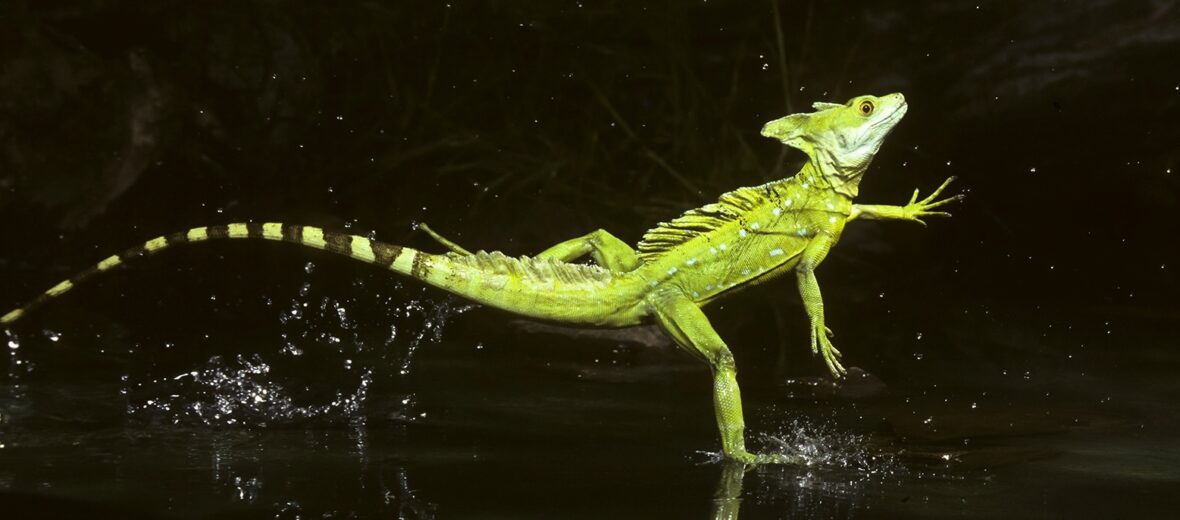
The basilisk is part of the iguana family and are from Central and South America. These critters are so cool in that they can actually run on water; earning them the name the Jesus lizard. I wish I could run on water. They are listed as Least concern by the IUCN. Learn more about these amazing lizards below.
First the Stats…
Scientific name: Basiliscus basiliscus
Length: Up to 2 feet
Lifespan: Up to 7 years
Weight: Up to a pound
Now on to the Facts!
1.) The basilisk can run up to 7 miles an hour.
2.) Basilisks have large hind feet. One side of their toes are larger via a row of larger scales. These scales are sort of rolled up when they walk on land. However, when the basilisk is in danger these scales are pushed upward creating a larger surface area on the water, thus allowing them to run on water for up to 30 – 60 feet.
3.) Basilisks, like many lizards, are diurnal (active during the day).
4.) Like other iguanids, basilisks are territorial and perform head bobbing when trying to look threatening and when courting a female.
5.) After laying her clutch of up to 18 eggs, the female will leave the nest and then, 3 months later, the babies are born and on their own.
But wait, there’s more on the basilisk!
6.) Like other iguanas, the basilisks are omnivores, feeding on insects, small vertebrates, fish, and vegetation.
7.) They can stay under water for up to 30 minutes!
Did you know…?
Being an iguanid, basilisks have what is known as a perietal eye. This is a partially developed eye on the top of their head that allows them to see light and dark shadows above them.
8.) When running on water, the Green Basilisk holds its tail in the air. This helps counterbalance upright posture and reduces drag. This helps them in this amazing little trick.
9.) A close relative of the modern Basilisk lived in Europe about 40 million years ago!
10.) The mythical beast called the Basilisk – half rooster, half lizard – provided this critter its name.
Now a Short Basilisk Video!
Also, check out the Critter Science YouTube channel. Videos added frequently!
Want to suggest a critter for me to write about? Let me know here.



